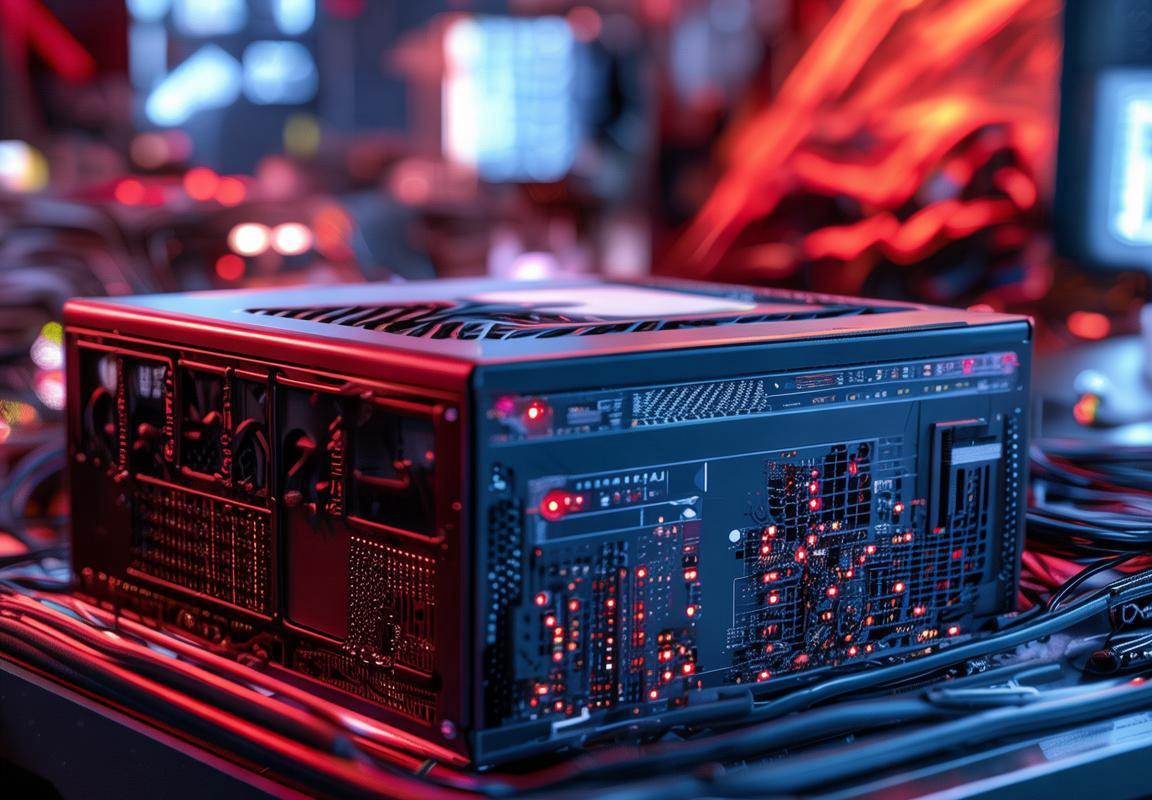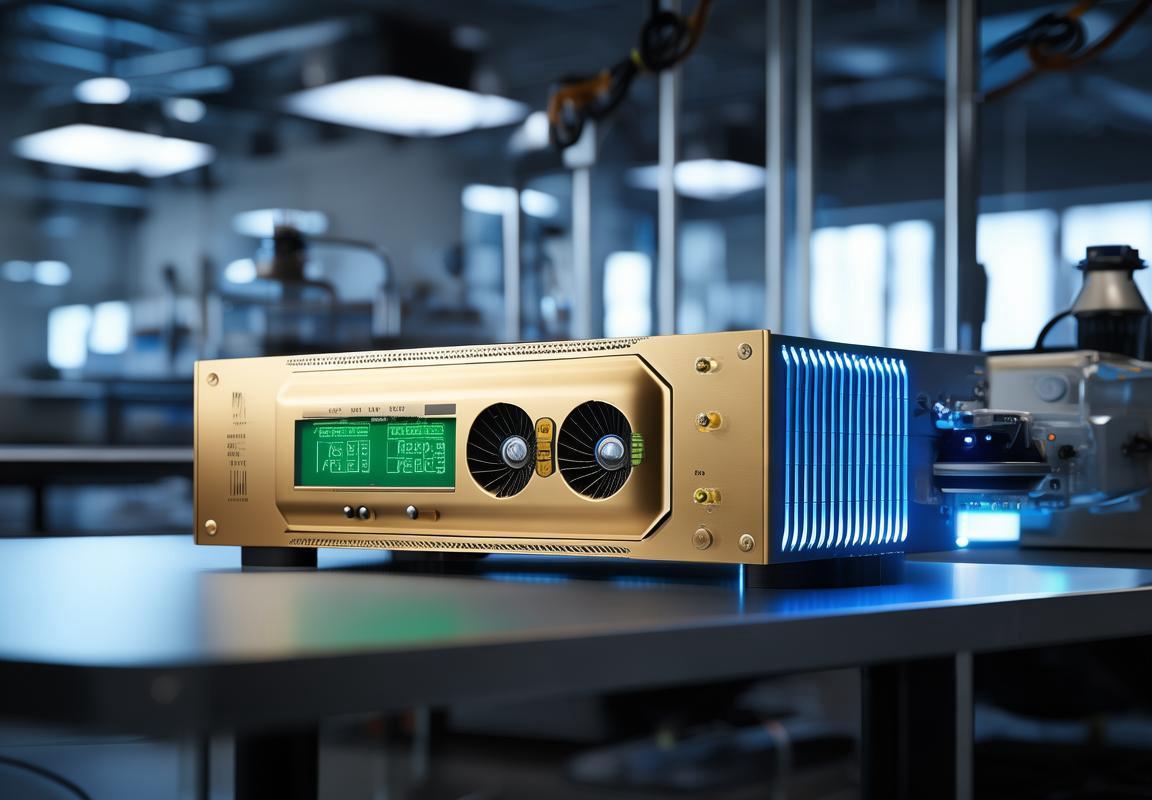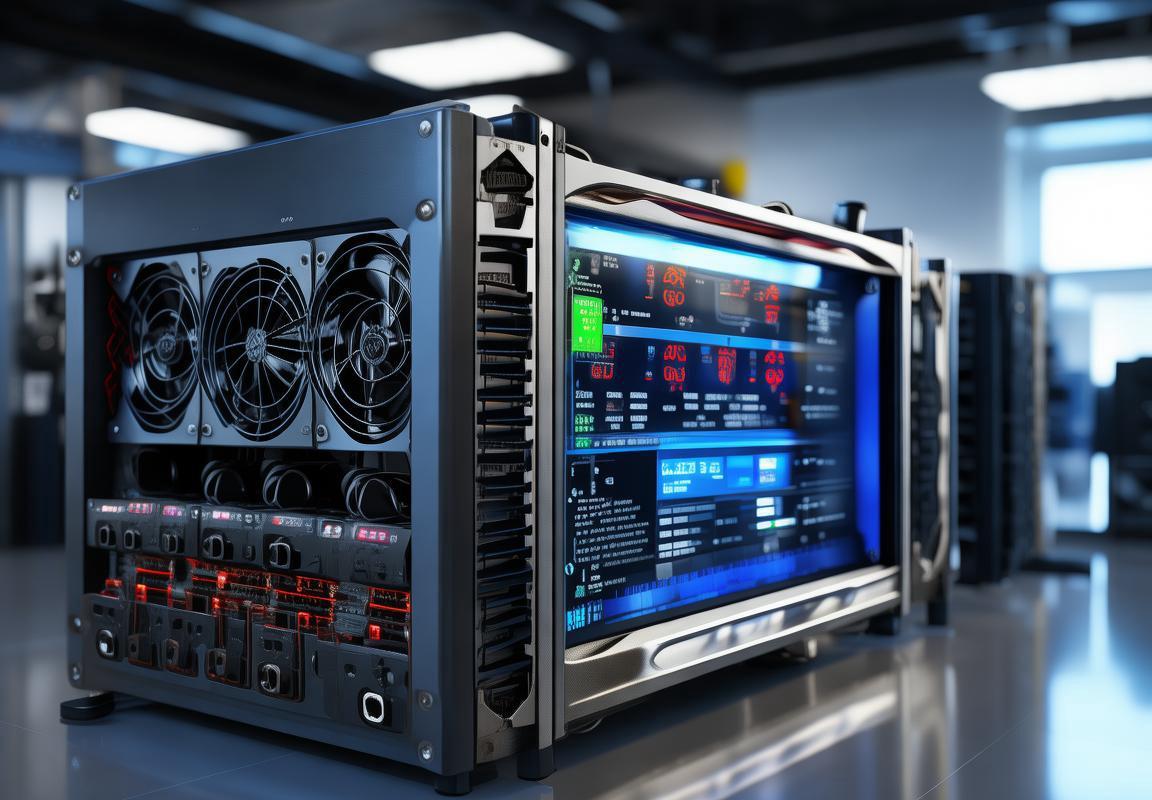In today’s fast-paced technological world, high-power devices play a crucial role in enhancing our daily lives. From powerful computers to high-performance appliances, these gadgets have become integral to our routines. However, with increased power comes the need for compliance and safety standards. That’s where CE-EMC compliance comes into play, ensuring that these high-power devices not only deliver on their promise but also do so safely and efficiently. This article delves into the significance of CE-EMC compliance, the key features of a 2200W device that meets these standards, and the myriad benefits it offers to consumers. We’ll also explore the role of manufacturers in ensuring compliance and how to identify CE-EMC compliant products with ease. So, let’s unravel the world of high-power devices and the standards that keep them running smoothly.
Introduction to High-Power Equipment
High-power equipment has become an integral part of our daily lives, powering everything from industrial machinery to home appliances. These devices, often characterized by their ability to deliver substantial amounts of electrical power, play a crucial role in modern society. From the hum of a large factory to the warmth of a central heating system, high-power equipment is the backbone of our energy needs.
In the realm of technology, high-power devices are designed to handle more intense workloads and demanding applications. This can range from high-capacity servers in data centers to powerful tools on construction sites. The power behind these devices is not just about brute force; it’s about efficiency and reliability. High-power equipment is engineered to perform tasks that require a significant amount of energy, ensuring that operations are smooth and uninterrupted.
When it comes to industrial settings, high-power equipment is the lifeline of production lines. These machines are built to withstand rigorous conditions, often operating 24⁄7 without faltering. They are designed to be robust, durable, and capable of handling heavy loads, which is why they are so essential in manufacturing and processing industries.
In residential settings, high-power appliances have revolutionized the way we live. From kitchen appliances like ovens and dishwashers to entertainment systems like home theater setups, these devices have transformed our homes into comfortable and convenient spaces. The power behind these devices allows us to enjoy modern conveniences without compromise.
The demand for high-power equipment has also led to advancements in technology. Engineers and designers are constantly pushing the boundaries to create more efficient and powerful devices. This pursuit of innovation has not only improved the performance of existing equipment but has also opened up new possibilities for applications that were once considered impractical.
One of the challenges associated with high-power equipment is the need for effective cooling systems. These devices generate a lot of heat, which can lead to overheating if not managed properly. As such, the design of high-power equipment often includes sophisticated cooling solutions to maintain optimal operating temperatures.
Another aspect to consider is the safety implications of high-power devices. Given their ability to deliver large amounts of electrical power, there is a heightened risk of electrical hazards. Manufacturers must adhere to strict safety standards to ensure that these devices are reliable and pose minimal risk to users.
In the context of energy consumption, high-power equipment can have a significant impact on a building’s energy efficiency. Modern high-power devices are increasingly being designed with energy-saving features to minimize their carbon footprint. This is particularly important in commercial buildings where energy costs can be substantial.
The environmental impact of high-power equipment is also a concern. As awareness of climate change grows, there is a push to develop more sustainable solutions. This includes the use of renewable energy sources to power high-power devices and the development of recycling programs for old equipment to reduce waste.
In summary, high-power equipment is a cornerstone of modern technology, providing the necessary power for a wide range of applications. From industrial productivity to the comfort of our homes, these devices play a vital role. As technology continues to evolve, so too will the capabilities and efficiency of high-power equipment, ensuring that they remain at the forefront of technological advancements.

The Significance of CE-EMC Compliance
In today’s fast-paced technological world, the demand for high-power equipment has surged, offering users more power and efficiency in various applications. However, with this increased power comes the need for stringent safety measures and regulations to protect both the users and the environment. This is where CE-EMC compliance plays a crucial role, and understanding its significance is paramount.
The CE marking, which stands for Conformité Européenne, is a certification that indicates a product meets all the essential health, safety, and environmental protection requirements of the European Union. It’s a symbol of quality and trust that consumers have come to rely on. When it comes to electromagnetic compatibility (EMC), CE-EMC compliance ensures that the product does not interfere with other electronic devices or systems, and vice versa.
One of the primary reasons for the importance of CE-EMC compliance is the protection it offers against electromagnetic interference (EMI). EMI can cause a range of issues, from minor disturbances to complete system failure. In critical applications such as medical devices, aerospace systems, and industrial machinery, the consequences of EMI can be severe, leading to safety hazards and significant financial losses.
Compliance with CE-EMC standards also helps to prevent unauthorized emissions that could disrupt communication systems, affect public safety, or even cause health issues. By ensuring that devices are properly shielded and designed to handle electromagnetic disturbances, CE-EMC compliant products contribute to a more stable and reliable environment for electronic devices.
For manufacturers, achieving CE-EMC compliance is not just about meeting regulatory requirements; it’s also a competitive advantage. Consumers are increasingly aware of the importance of safety and quality, and they are more likely to choose products that bear the CE mark. This can lead to increased sales and market share, as well as the potential to expand into new markets within the EU.
Moreover, CE-EMC compliance can also help businesses save money in the long run. While the initial investment in testing and certification can be significant, it is far less costly than the potential fines and legal fees that could arise from non-compliance. It also reduces the risk of product recalls and the associated costs, not to mention the damage to the company’s reputation.
The process of obtaining CE-EMC compliance involves a thorough assessment of the product’s electromagnetic behavior. This includes testing for conducted emissions, radiated emissions, immunity to interference, and the potential for electromagnetic disturbances. The tests are conducted in accordance with a set of harmonized standards that are recognized across the EU, ensuring consistency and fairness.
For example, the EN 55011 standard covers conducted emissions and immunity for information technology equipment, while EN 55022 deals with radiated emissions and immunity for household appliances, IT equipment, and similar equipment. These standards are updated regularly to keep pace with technological advancements and to reflect the latest scientific understanding of electromagnetic phenomena.
In addition to the technical aspects, CE-EMC compliance also requires documentation that demonstrates how the product meets the necessary standards. This documentation is essential for regulatory authorities and can also serve as a reference for customers and partners who are interested in the product’s compliance status.
Furthermore, CE-EMC compliance is not a one-time achievement. It is an ongoing process that involves continuous monitoring and improvement. As new devices and technologies emerge, manufacturers must stay informed about the latest standards and adapt their products accordingly.
In conclusion, the significance of CE-EMC compliance cannot be overstated. It is a vital aspect of product development that ensures safety, reliability, and consumer trust. For manufacturers, it is a regulatory requirement that can also provide a competitive edge. For consumers, it is a guarantee that the products they purchase are of high quality and meet the necessary safety standards. In an increasingly interconnected world, CE-EMC compliance is a cornerstone of responsible and sustainable electronics manufacturing.

The 2200W Power Rating: What It Means for Users
In the realm of electronic devices, the power rating is a crucial specification that can significantly impact the user experience. When you come across a product with a 2200W power rating, it’s essential to understand what this means for you as a user. Here’s a breakdown of what this power rating entails and how it affects your daily life:
The 2200W power rating indicates that the device in question is designed to handle a substantial amount of electrical power. This means that it’s capable of delivering more energy than devices with lower power ratings. For instance, a 2200W device can perform tasks that require a high output of power much more efficiently than its lower-rated counterparts.
For users, this translates to several advantages. Firstly, devices with a 2200W rating are often more powerful and faster, making them ideal for heavy-duty tasks such as high-definition gaming, video editing, or running industrial machinery. The extra power ensures that these tasks are completed with ease, saving you both time and frustration.
In the context of consumer electronics, the 2200W rating is particularly significant for devices like gaming computers, high-end laptops, and professional audio equipment. These devices demand a considerable amount of power to function optimally, and the 2200W rating guarantees that they can handle the strain without overheating or experiencing performance issues.
Another benefit of the 2200W power rating is that it allows for the integration of more advanced and power-hungry components. This means that you can expect cutting-edge technology to be included in devices with this power rating, such as the latest graphics cards, processors, and other high-performance parts. Users who value staying at the forefront of technology will find the 2200W rating appealing.
However, with great power comes great responsibility, or at least a few considerations. For one, the 2200W rating suggests that the device will consume more electricity than lower-powered models. This means higher energy bills and a larger carbon footprint, so users need to be mindful of their energy consumption and consider the environmental impact.
Moreover, the increased power demand also means that the device will generate more heat. Efficient cooling systems must be in place to prevent overheating, which can lead to hardware damage and reduced lifespan. As a user, it’s important to check that the device you’re purchasing has robust cooling solutions to maintain optimal performance.
In terms of safety, the 2200W rating also necessitates that the device is built with high-quality, durable materials and includes proper safety features. This ensures that the device can handle its power output without posing a risk of fire or electric shock. Users should look for certifications like CE-EMC compliance to guarantee that the device meets safety standards.
The 2200W power rating also affects the physical size and weight of the device. High-power devices often require larger enclosures and more robust construction, which can make them bulkier and heavier. This is something to consider if you’re planning to move the device frequently or if space is a concern in your setup.
For those who prioritize performance over all else, the 2200W rating is a godsend. It allows for the seamless execution of resource-intensive tasks, ensuring that you can push your system to its limits without compromise. However, users should also be prepared for the potential drawbacks, such as increased energy costs and the need for robust cooling and safety features.
In summary, the 2200W power rating signifies a device’s ability to deliver a substantial amount of power, which is ideal for heavy-duty tasks and cutting-edge technology. Users should weigh the benefits of high performance against the potential for higher energy consumption and larger physical dimensions. By understanding what this rating means, users can make informed decisions that align with their needs and preferences.

Ensuring Safety and Efficiency with CE-EMC Compliance
Understanding the power rating of an electronic device is crucial, especially when it comes to high-wattage units like the 2200W. This rating signifies the amount of electrical power the device can handle, which is vital for users seeking efficiency and reliability. Let’s delve into what this means for users and how it impacts their experience with such devices.
A 2200W power rating indicates that the device is designed to operate at a higher capacity, making it suitable for tasks that require substantial energy. For users, this translates to a few key advantages:
-
Enhanced PerformanceWith a 2200W power output, devices are capable of handling more demanding tasks. This is particularly beneficial for professionals in fields like construction, where heavy-duty equipment is often required. Users can expect faster processing times, more powerful output, and a smoother operation overall.
-
Efficiency in Energy UseHigh-wattage devices like those with a 2200W rating are designed to be energy-efficient. This means that while they can handle more power, they also convert it into usable energy more effectively. Users can save on electricity costs and reduce their carbon footprint, contributing to a more sustainable lifestyle.
-
Compatibility with Various AppliancesA 2200W rating ensures that the device can be used with a wide range of other appliances. Whether you’re using it in a kitchen for cooking, in a workshop for power tools, or in a professional setting for industrial machinery, the device’s power output will likely meet or exceed the requirements of the connected equipment.
-
Durability and LongevityDevices with a higher power rating are often built to withstand heavy use. This durability means that users can expect their 2200W device to last longer, reducing the need for frequent replacements and the subsequent waste associated with disposal.
Ensuring safety with CE-EMC compliance is another critical aspect of using a 2200W device. CE (Conformité Européenne) is a certification mark that signifies that a product meets all the essential health, safety, and environmental protection requirements set by European legislation. EMC (Electromagnetic Compatibility) refers to the ability of a device to function without causing interference to other equipment and to tolerate any interference generated by other equipment.
Here’s how CE-EMC compliance contributes to safety and efficiency:
-
Reduced Risk of Electrical HazardsCE-EMC compliant devices undergo rigorous testing to ensure they meet stringent safety standards. This includes protecting users from electric shocks, fire hazards, and other electrical risks that could arise from improper use or manufacturing defects.
-
Minimized InterferenceElectromagnetic compatibility is crucial in environments where multiple devices are in use. A CE-EMC compliant 2200W device is designed to operate without causing electromagnetic interference to other electronic systems, ensuring a stable and reliable performance.
-
Enhanced User ConfidenceWhen a device carries the CE mark, users can have peace of mind knowing that it has been tested and certified to meet European safety standards. This can be particularly reassuring for users who are not electronics experts.
-
Compliance with Environmental RegulationsCE-EMC compliance also involves adhering to environmental standards, which can include reducing energy consumption and minimizing the device’s impact on the environment. This not only benefits the user but also contributes to a broader sustainability agenda.
In summary, the 2200W power rating of a device is a testament to its ability to deliver robust performance. For users, this means a tool that can handle heavy-duty tasks efficiently and effectively. However, it’s the combination of this power rating with CE-EMC compliance that truly ensures a safe and efficient user experience. By adhering to these standards, manufacturers can produce devices that not only meet performance expectations but also protect users from potential hazards and contribute to a cleaner, more sustainable world.

Key Features of a CE-EMC Compliant 2200W Device
A 2200W device that complies with the CE-EMC (Conformité Européenne – Electromagnetic Compatibility) standards offers a range of essential features that not only ensure safety but also enhance user experience. Here’s a closer look at what these key features entail:
-
Robust EMI FiltersElectromagnetic interference (EMI) is a common concern when dealing with high-power devices. A CE-EMC compliant 2200W device is equipped with robust EMI filters that minimize the emission of unwanted electromagnetic signals. These filters act as a barrier, preventing interference with other electronic devices and ensuring stable performance.
-
High-Quality ComponentsTo support a 2200W output, these devices must be built with high-quality components. This includes using durable capacitors, transformers, and transistors that can withstand the intense power demands without overheating or failing. The use of premium materials ensures longevity and reliability.
-
Efficient Heat DissipationA key feature of any 2200W device is its ability to dissipate heat effectively. CE-EMC compliant models often incorporate advanced cooling systems, such as large heat sinks, fans, or liquid cooling solutions, to maintain optimal operating temperatures. This not only prevents damage to the device but also extends its lifespan.
-
Overload ProtectionOne of the most critical features of a 2200W device is overload protection. CE-EMC compliance requires that these devices have built-in safety mechanisms to prevent damage from excessive current or voltage. This might include thermal fuses, circuit breakers, or current-limiting circuits that kick in when the device is at risk of overheating or malfunctioning.
-
Low Voltage StandbyIn line with energy efficiency standards, a CE-EMC compliant 2200W device typically features a low voltage standby mode. This means that even when the device is not actively in use, it consumes minimal power, reducing energy waste and lowering electricity bills.
-
Signal FilteringTo maintain clean and stable power delivery, CE-EMC compliant devices often include sophisticated signal filtering. This ensures that the output power is free from harmonic distortions and other electrical noise that can affect the performance of connected equipment.
-
User-Friendly InterfaceA well-designed user interface is a hallmark of a CE-EMC compliant 2200W device. Users should expect intuitive controls, clear displays, and easy-to-read indicator lights. This makes the device not only safe to use but also convenient and user-friendly.
-
Compliance with International Safety StandardsCE-EMC compliance also means that the device adheres to a host of international safety standards. This includes certifications like RoHS (Restriction of Hazardous Substances) and WEEE (Waste Electrical and Electronic Equipment Directive), ensuring that the device is environmentally friendly and safe for users.
-
Enhanced ReliabilityThe combination of high-quality components, advanced cooling systems, and safety features results in a device that is highly reliable. Users can trust that their 2200W device will perform consistently over time, reducing the need for frequent repairs or replacements.
-
Regulatory Peace of MindFor businesses and consumers alike, the CE mark is a symbol of regulatory compliance. A CE-EMC compliant 2200W device means that it has passed rigorous testing to meet European Union standards, which are often considered a benchmark for quality and safety.
In summary, the key features of a CE-EMC compliant 2200W device are designed to provide users with a safe, efficient, and reliable power solution. From robust EMI filters to user-friendly interfaces, these features ensure that the device not only meets the necessary regulatory requirements but also offers a superior user experience.

Benefits for Consumers
Understanding the power rating of a device is crucial, especially when it comes to a 2200W unit. This rating signifies not just the raw power output, but also the potential impact on users’ daily lives and their devices. Here’s what you need to know about the implications of a 2200W power rating for users:
A 2200W power rating indicates that the device is designed to handle high-intensity tasks that require substantial electrical power. This can include everything from heavy-duty power tools to high-performance computing systems. Users who opt for a 2200W device can expect several key benefits:
-
Enhanced PerformanceA device with a 2200W power rating can handle more demanding tasks with ease, leading to improved performance. Whether it’s a professional-grade blender processing tough ingredients or a high-end gaming rig running multiple graphics-intensive applications, the additional power ensures that the device operates smoothly without slowing down or overheating.
-
Increased ProductivityWith the ability to tackle more challenging tasks, a 2200W device can significantly boost productivity. Users who rely on their equipment for work, such as photographers processing large batches of images or videographers editing high-resolution videos, will find that a 2200W device allows them to complete their projects more quickly and efficiently.
-
VersatilityThe power and capability of a 2200W device make it a versatile tool for various applications. From industrial use to home entertainment systems, the adaptability of such a device ensures that it can be used in multiple scenarios without the need for upgrading or replacing it with a less powerful alternative.
-
Energy EfficiencyDespite the high power rating, modern 2200W devices are often designed with energy efficiency in mind. Advances in technology have led to the development of power supplies and components that are not only capable of delivering high power but also doing so with minimal energy waste. This means that while the device may consume a lot of power, it does so more efficiently than older models.
-
Longer LifespanThe ability to handle high-intensity tasks without overheating or failing can lead to a longer lifespan for the device. A well-engineered 2200W device is likely to last longer than a similar device with a lower power rating, saving users the cost of frequent replacements.
-
CompatibilityA 2200W device is designed to work with a wide range of power sources and accessories. Users can expect compatibility with various power outlets, transformers, and other peripherals, which means they can use the device in different environments without worrying about compatibility issues.
-
Cost-EffectivenessWhile a 2200W device may have a higher upfront cost compared to a lower-power alternative, the long-term savings can be significant. The increased performance and efficiency often result in lower maintenance and energy costs, making the higher initial investment worthwhile.
-
Peace of MindFor users who are working with potentially dangerous or high-risk equipment, such as welding machines or certain medical devices, a 2200W unit that meets stringent safety standards can provide peace of mind. Knowing that the device is designed to operate safely and reliably can be invaluable for those who rely on it for their livelihood.
-
Market TrustThe 2200W power rating, especially when accompanied by CE-EMC compliance, is a sign of quality and trustworthiness. Users who purchase a device with this rating can feel confident that it has undergone rigorous testing to ensure it meets the highest standards of safety and performance.
-
ScalabilityAs technology advances, users may find that their needs evolve over time. A 2200W device can be scaled up to handle future upgrades or additional components, ensuring that the investment in the device remains valuable even as the user’s requirements change.
In conclusion, a 2200W power rating signifies a device that is capable of delivering high levels of performance, efficiency, and versatility. For users, this means enhanced productivity, cost-effectiveness, and the assurance that their investment will serve them well for years to come. Whether for personal use or professional applications, a 2200W device can be a powerful asset, providing the power and reliability needed to meet a wide range of challenges.

The Role of Manufacturers
In the world of electronics, manufacturers play a pivotal role in shaping the quality and safety of the products we use daily. Their responsibilities extend beyond creating innovative devices; they are also tasked with ensuring that these products meet stringent regulatory standards. Here’s a closer look at the multifaceted role of manufacturers in the context of CE-EMC compliance:
Manufacturers are the architects of the products we rely on, and their design choices can significantly impact the compliance of a device with CE-EMC standards. They must carefully select components that not only perform well but also integrate seamlessly to minimize electromagnetic interference (EMI) and ensure that the device operates within the acceptable levels of electromagnetic compatibility (EMC).
The development process involves rigorous testing and validation to ensure that the product meets the required specifications. This includes simulating various operating conditions to guarantee that the device will perform reliably and safely in real-world scenarios. Manufacturers must invest in advanced testing equipment and skilled personnel to carry out these tests effectively.
Compliance with CE-EMC standards also requires manufacturers to adhere to a set of documentation processes. This includes preparing technical files that detail the design, materials, and testing procedures used to ensure the product’s EMC performance. These documents are crucial for regulatory authorities and consumers alike, providing transparency and a clear trail of the product’s compliance journey.
In addition to the technical aspects, manufacturers must navigate the complexities of certification. This involves submitting the product for assessment by an authorized certification body, which will verify that all necessary tests have been conducted and that the product meets the CE-EMC directives. The certification process can be time-consuming and costly, but it is a critical step in ensuring that the product can be legally marketed within the European Union.
Manufacturers also have a responsibility to educate their customers about the importance of CE-EMC compliance. By providing clear information on the product’s compliance status, they help consumers make informed purchasing decisions. This includes labeling the product with the CE mark, which signifies that it meets all the necessary safety and health requirements set by the European Union.
Ensuring CE-EMC compliance is not just about meeting regulations; it’s about building trust with consumers. A compliant product is less likely to cause electromagnetic interference with other devices, reducing the risk of system malfunctions and data corruption. This reliability is particularly important in sensitive environments such as hospitals, where medical equipment must operate without interruption.
Moreover, manufacturers must stay abreast of changes in CE-EMC regulations. As technology evolves, so do the standards that govern it. This requires a commitment to continuous improvement and adaptation. Manufacturers that invest in ongoing training for their engineers and quality assurance teams can stay ahead of the curve and ensure that their products remain compliant with the latest requirements.
In the event that a product does not meet CE-EMC standards, manufacturers must be prepared to take corrective action. This might involve redesigning the product, modifying the manufacturing process, or even recalling the product from the market. The ability to quickly address non-compliance issues is crucial for maintaining the brand’s reputation and customer loyalty.
Lastly, manufacturers are instrumental in driving innovation while maintaining compliance. They must find ways to incorporate new technologies and features into their products without compromising on EMC performance. This often requires a balance between cost, performance, and compliance, which can be challenging but is essential for the success of the product in the competitive global market.
In summary, the role of manufacturers in CE-EMC compliance is multifaceted. From the initial design phase to the final product launch, they must be diligent in ensuring that their products meet the necessary standards. Their commitment to quality, safety, and regulatory compliance is what ultimately protects consumers and maintains the integrity of the marketplace.

How to Identify CE-EMC Compliant Products
Navigating the market for high-power devices can be daunting, especially when you’re looking for something as robust as a 2200W device. Understanding the power rating and what it signifies for users is crucial in making an informed decision. Here’s a breakdown of the implications of a 2200W power rating:
A 2200W power rating indicates that the device is designed to handle a substantial amount of electrical power. This is particularly important for users who require high-performance, such as in professional settings or for tasks that demand significant processing power. For instance, a 2200W device is well-suited for servers, high-end gaming PCs, or power tools that require a lot of energy to operate efficiently.
The power rating also speaks to the device’s capacity for handling peak loads. Many devices can operate at their rated power for short periods but may struggle under sustained use. A 2200W device, however, is built to maintain performance even when under heavy strain, making it a reliable choice for those who need consistent, high-power output.
Users should also consider the power supply unit (PSU) that will be powering the 2200W device. The PSU must be able to deliver the required power and have enough headroom to handle spikes in demand without shutting down or overheating. This means investing in a quality PSU that is compatible with the 2200W rating to ensure the device operates optimally.
Energy efficiency is another aspect that a 2200W device addresses. While high-power devices can consume a lot of energy, advancements in technology have led to more efficient designs. Users should look for devices with energy-saving features and certifications that indicate a lower energy footprint. This not only benefits the environment but also reduces long-term operating costs.
The thermal design of a 2200W device is also critical. High-power components generate more heat, so the device must have effective cooling solutions to prevent overheating. Users should seek out devices with robust ventilation, heat sinks, and possibly liquid cooling systems to ensure the device remains stable and reliable over time.
When it comes to expandability, a 2200W device often comes with additional power connections and modular power supplies. This allows for easy upgrades and the addition of more power-hungry components, ensuring that the device can grow with the user’s needs.
In terms of compatibility, a 2200W device should be compatible with various power sources and have universal power adaptors. This is especially important for users who travel or work in different regions, ensuring that they can use their device without the hassle of additional adaptors or transformers.
For users looking for a 2200W device, it’s also worth considering the warranty and support offered by the manufacturer. A longer warranty period and reliable customer service can provide peace of mind, knowing that the device is covered in case of any issues.
Lastly, the build quality and durability of a 2200W device should be top-notch. High-power devices are often used in demanding environments, so they need to withstand physical stress and potential drops or impacts. Users should look for devices with solid construction, reinforced components, and materials that can withstand the rigors of heavy use.
In summary, a 2200W power rating is a significant factor for users seeking high-performance and reliability. It’s essential to consider the device’s ability to handle peak loads, energy efficiency, thermal management, expandability, compatibility, warranty, build quality, and durability when selecting a 2200W device. By doing so, users can ensure they’re getting a device that meets their needs and stands the test of time.

Conclusion
In the ever-evolving world of technology, products are becoming more advanced and powerful, and this is particularly evident with devices that carry a 2200W power rating. This rating signifies a significant leap in the capabilities of these devices, offering users a level of performance that was once unattainable. However, with great power comes great responsibility, and understanding what this power rating means for users is crucial. Let’s delve into the implications of a 2200W power rating on consumer experience.
A 2200W power rating denotes a device’s ability to deliver a substantial amount of power, which translates to higher performance and potentially faster processing times. For instance, a 2200W graphics card is capable of handling demanding tasks with ease, making it ideal for gaming, 3D rendering, and video editing. This power output means that users can enjoy smoother gameplay, more detailed visuals, and quicker render times, enhancing the overall user experience.
However, with this increased power comes the need for more robust cooling systems. High-power devices tend to generate more heat, which can lead to performance throttling or even hardware damage if not managed properly. Users must ensure that their systems have adequate cooling solutions to maintain peak performance and longevity. This means investing in high-quality fans, heat sinks, or liquid cooling solutions, which can be an additional cost but is essential for the device’s health.
Moreover, a 2200W power rating requires a stable and reliable power supply. The power supply unit (PSU) must be able to deliver consistent power without fluctuations that could harm the device or cause system instability. Users should look for PSUs with a high efficiency rating and ample wattage to support the 2200W device, ensuring that power demands are met without overloading the system.
Energy consumption is another critical factor for users. A 2200W device will consume more electricity than a standard unit, which can lead to higher energy bills. To mitigate this, users can adopt energy-efficient practices, such as using power-saving modes, unplugging peripherals when not in use, and ensuring that the device is only powered on when needed.
For those who are environmentally conscious, the 2200W power rating also raises questions about the device’s carbon footprint. High-power devices contribute to higher energy consumption and, subsequently, more greenhouse gas emissions. Users can offset this by choosing energy-efficient devices, utilizing renewable energy sources, and disposing of electronics responsibly.
Another aspect to consider is the heat generated by a 2200W device. This level of power output can lead to significant heat dissipation, which may require additional space in a user’s setup. This is particularly important for those with compact cases or limited desk space. Users might need to invest in a modular case or consider an open-air design to ensure proper ventilation.
In terms of noise, a 2200W device may produce more noise due to the increased fan speeds required for cooling. This can be a concern for users who prefer a quiet computing environment. To address this, manufacturers are incorporating quieter fans and advanced cooling technologies that minimize noise levels without compromising performance.
The 2200W power rating also affects the device’s compatibility with other components. Users must ensure that their motherboard, RAM, storage, and other peripherals are compatible with the power demands of the high-wattage device. This may involve researching and purchasing components that are designed to work harmoniously with high-power hardware.
In summary, the 2200W power rating offers users a level of performance that can revolutionize their computing experience. However, it also comes with its set of challenges, including the need for robust cooling, a reliable power supply, energy conservation, and careful consideration of environmental impact. Users must weigh these factors and make informed decisions to ensure that their high-power device provides the intended benefits without causing undue stress on their systems or the environment.